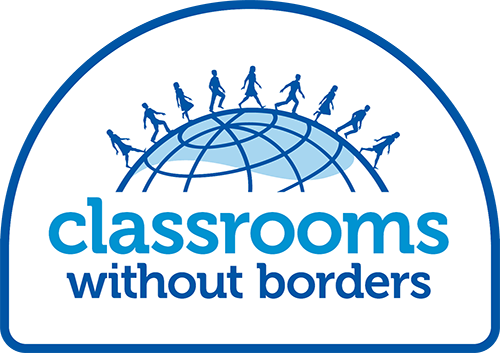Salt Mine, Plaszow, and Closing
Today we went to the salt mine outside Kraków. It was amazing to see the sculptures and to consider how much and how hard people worked for salt over the centuries. It was another opportunity for us all to be grateful. We see salt as a common place commodity. Yet we don’t consider all the depths and work endured to get us that salt. And if we aren’t grateful, if we don’t take note of all the hard work and sacrifice that has put us in the comfortable, privileged place we occupy, then how are we worth our salt?
After the salt mine, we went to lunch and celebrated Tsipy’s birthday. Tsipy is the head of Classrooms Without Borders. She arranged and cared for everything on this trip so well, and she definitely deserved the celebration we gave her and more.
I noticed something strange once we got back on the bus. There was a fence right outside where we had lunch, and on that fence someone had spray-painted or scratched on the word “Jude.” In German, Jude means Jew. There was no apparent explanation for this. It was eerie.
We then went to Plaszow Forced labor camp outside Kraków. This was the camp featured in Schindler’s list. Here, we had our memorial service that was supposed to be at Auschwitz. I asked Jonty where the commandant Amon Göth’s villa was, and he pointed to a faraway hill where the grass looked dead. It gave me an idea of just how large Plaszow was. One can’t tell as much now because there are few things original to the camp left, and most of the site has been overgrown by trees and other greenery. After the memorial service, we took group photos and left. I will have to come back to walk around the site more. A problem with coming to these places alone would be that one might step on a mass grave without knowing. The amount of mass graves we saw on this trip was sickening and heartbreaking all at once. I remember on our first day in Poland and in Warsaw, Dr. Josh Andy said something to us about mass graves. As we stood around the mass graves at the Warsaw Jewish cemetery, he said “This is what most of the Holocaust looks like.” A collective pile of nameless deaths hidden underground. Unfortunately, people often see the holocaust in a collective way. But, like Jonty said at the beginning of this trip, the death of six million is not to be seen as 6 plus 6 zeros. It is to be seen as 1+1+1+1+1 until you reach 6 million murdered individuals. When we are learning about the Holocaust, whether in a classroom or a concentration camp, we need to think of its victims, survivors, perpetrators, and bystanders not as collective groups, but as individuals. The dehumanization of individual lives into a collective group is the foundation of bigotry, and that is what every single person who directly took part in and indirectly supported the murder of innocent lives did. It was easier to murder them that way. They were reduced to nothing more then apart of the collective enemy and obstacle. Then, slowly but shortly, they were treated as such. They no longer could support themselves. They no longer went to school. They were isolated from everyone. Quarantined like a disease. They were weakened. They were murdered. Most in mass quantities. All as a collective. To the murderers, individuals were not killed. Parts of the collective were killed. That way the murderers could not see the grandmothers and grandfathers and babies and mothers and fathers and sons and daughters when they fired their guns or put the gas into the chamber. They saw only the enemy. And let us not forget that the SS and other perpetrators of the holocaust were not just monsters. Heinrich Himmler, the head of the SS, was a farmer. As Dr. Andy said on the way back from Auschwitz, 55% of the SS were lawyers. In practically every town visited by the Einsatzgruppen, the Nazis’ killing squads, and in the town of Jedwabne, where Polish citizens burned Jewish people alive in a barn, the murderers were neighbors. People did this. That is the scary part.
So, let us not forget this history as we continue to learn its depths and the depths of other tragedies and times of mass malevolence. Let our thought and judgment not stop at the surface level of any issue. Let us question everything we are told. Let us question our own choices. Let us realize that our individual actions matter. Let us see that there are always radicals in every direction, and each of them waits for us to think they don’t exist, so as to rise to power and take control. Let us remember that the people who put Hitler in power did not see him as a radical until it was too late. Let us be grateful for all the freedoms and comforts we have. Let us realize that, though what we saw and experienced on this trip dealt with what the Nazis called the Jewish question, the Holocaust is a question to all humanity. What will we do?
Let us be apart of the answer that makes the world a better place.
